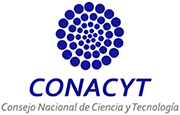Transformation and innovation of knowledge in the construction and sustainable function of housing in the town of San Juan Chamula
DOI:
https://doi.org/10.20983/decumanus.2022.1.6Keywords:
traditional architecture, architectural change, chamula, migration, housingAbstract
San Juan Chamula, Chiapas, is one of the most representative cultures of the original peoples of Mexico. The municipal capital is composed of three main neighborhoods which are San Juan, San Pedro and San Sebastian. The main objective of this work was to investigate the determining factors for the transformation and innovation of knowledge systems in the construction and sustainable function of houses located in San Juan Chamula. To achieve the objective we adhered to the ethnographic methodology and to the qualitative and quantitative approaches, whose data collection techniques consisted of direct and indirect interviews, observations and field trips, aided by field diary, use of tape recorder and camera. The results obtained indicate that the materials used for construction are straw, adobe, bajareque and others of organic origin, that is, natural elements that Mother Earth provides and that the inhabitants have within their reach for their use.
According to the Chamula cosmovision, the house has played functions for rest and shelter, it was considered a sacred place; when building it, ceremonies and offerings were carried out to placate any displeasure of the guardians of Mother Earth, since it was considered that nature had life, and to avoid any misfortune among family members, it was necessary to offer music, songs and special dishes to feed the house and the Earth, so they would have harmony and wellbeing. However, Chamula housing has gone through three different stages of transition that framed the history from 1940 to 1970, 1980 to 2000 and 2000 to 2022. It can be observed that, from 1990 onwards, the constructions were made of industrialized materials such as bricks, block and cement. Today, the architectural knowledge and construction know-how of the first transition period has been innovated due to international migration and other factors.
In addition, with the return of chamulas who reside in the United States, the way of building and the functionality of the houses changed, and there is a lack of architectural knowledge, so that the traditional architecture only remains in the community elders. Currently, the builders of the new chamula houses send remittances from abroad or sometimes they build them themselves, and opt for a foreign architecture of Californian influence and technique. The two to three-story structures, made of cement and block, with quite high volumes of wood, iron, tinted glass, large windows and doors, with the luxurious appearance of a mansion, are a sign of a new way of living and of relating to nature.
Downloads
References
Alvarado, L. (2022) Plano del interior de una vivienda californiana chamula actual. San Cristóbal de Las Casas, Chiapas.
Ángeles, C. y Peniche, A. (2017). Crean prototipo de casa bioclimática en Yucatán. Obtenido de City manager. El fenómeno de las ciudades: https://revistacitymanager.com/banner/crean-prototipo-casa-bioclimatica-yucatan/
Cochran, G. (1980). Técnicas de muestreo. México: CECSA.
Coporo, Q. G. (2016). K´uyelan jelem xch’iel stalel bats’i vinik antsetik: sjol yo’onton ach’ jch’ieletik. Trascendencia de la identidad tsotsil: miradas de una nueva generación. Tuxtla Gutiérrez. Chiapas: Coneculta.
DETEA, S. (2018). ¿Qué materiales no usar en construcción? Obtenido de DETEA, Construimos soluciones: http://www.detea.es/que-materiales-no-utilizar-en-construccion/
Escamirosa, L. (2015). Vivienda rural y entorno saludable. Caso Ocuilapa de Juárez, Chiapas. México: Miguel Ángel Porrúa.
Gónzalez, A. (2016). Análisis de las causas y consecuencias de los accidentes laborales ocurridos en dos proyectos de construcción. Revista Ingenieria de Construcción Scielo, 49-78.
Gossen, H. G. (2000). Las cuatro creaciones de los verdaderos hombres: Relato maya tsotsil de la experiencia humana. Obtenido de http://www.famsi.org/reports/99014es/99014esGossen01.pdf.
Hammersley, M. y Atkinson, P. (1994). ¿Qué es la etnografía? Metódos de Investigación. Barcelona: Paidos.
Hérnandez, R., Fernández, C. y Baptista, L. P. (2006). Metodología de la Investigación. México: McGraw-Hill Interamericana.
Inegi (2010). Chamula, Chiapas. Obtenido de https://www.vivemx.com/mpo/chamula.htm.
Jorgensen, D. L. (1989). Observación participativa: una metodología para los estudios humanos. Londres: Serie de métodos de investigación social aplicada, vol. 15.
Kramsky V. (1972). Fotografia de Vicente Kramsky. Panorámica de Chamula, Centro en 1972. Archivo fotográfico Vicente Kramsky. Obtenido de Cultura Indígena de Chiapas 19501970: http://www.vicentekramsky.com/indigenas195070/fotos/content/5225_San_Juan_Chamula_vista_general_1972_foto_V.Kramsky-Editar_large.html
Laughlin, R. M. (1993) Los tzotziles. La población indígena de Chiapas. Gobierno del Estado de Chiapas
Martínez, M. J. (2018). Fotografía panorámica de San Juan Chamula, desde el cerro Las Cruces. San Cristóbal de Las Casas.
Martínez, V. G. (2012). Desarrollo regional, sociodemografía y condiciones de vida de la población Chamula, Chiapas. Papeles de población: https://www.redalyc.org/pdf/112/11203406.pdf
Méndez, D. A. (2016). Plantas, rituales y turismo en la cabecera de Chamula, Chiapas. San Cristóbal de las Casas. Tesis para obtener el título de licenciada en Turismo Alternativo, 2010-2014.
Morris, W. (1987). Presencia maya. Tuxtla Gutiérrez: Gobierno del Estado de Chiapas.
Palma, M. G. (1988). La casa maya y su solar Oriente. Yucatán: Instituto Mexicano de Tecnología del Agua.
Pérez, L. E. (1997). Chamula, un pueblo tsotsil. Tuxtla Gutiérrez, Chiapas: Gobierno del Estado de Chiapas. Centro Estatal para la Cultura y las Artes de Chiapas.
Pozas, A. R. (1977). Chamula: un pueblo indio de los Altos de Chiapas. México: Comisión Nacional para el Desarrollo de los Pueblos Indígenas. Instituto Nacional Indigenista.
Ramírez, T. A. (2018). El Desarrollo Sustentable: Interpretación y Análisis. Obtenido de Sistema de información científica: https://www.redalyc.org/html/342/34202107/
Rodríguez, G. G. (1996). Metodología de la investigación cualitativa. Aljibe.
Sampieri, R. H. (2010). Metodología de la Investigación. Mexico: Mc Graw Hill.
Santana, M. E. (2015). El buen vivir, miradas desde adentro. Obtenido de Sistema de Información Cientifica Redalyc:
http://www.redalyc.org/pdf/906/90638786008.pdf
Sánchez, M., Sánchez, M. A., Vázquez, T. J. (2018). Etnobiología de los tsotsiles de Chiapas, en: Mariaca, M., C.
Elizondo, y Ruan, F. (2018). Etnobiología y patrimonio biocultural de Chiapas, El Colegio de la Frontera Sur, San
Cristóbal de las Casas, Editorial Chiapaneros, San Cristóbal de las Casas, Chiapas, México.
Trujillo, A. G. (2018). Transformación e innovación de conocimientos en la construcción y función sustentable de las viviendas en la cabecera de San Juan Chamula. Tesis de licenciatura, Universidad Intercultural de Chiapas.
Vela, P. F. (2001). Un acto metodológico básico de la investigación social: la entrevista cualitativa. En Observar, escuchar y comprender sobre la tradición cualitativa en la ciencia social. México: Tárres, Colegio de México.
Villarrojas, A. (1993). Los elegidos de Dios. Tuxtla Gutiérrez: Gobierno del Estado. Instituto chiapaneco de cultura.
Vogt, E. (1996). Los zinacantecos. Un pueblo tsotsil de los Altos de Chiapas. México: Instituto Nacional Indigenista.
Downloads
Published
How to Cite
Issue
Section
License
Copyright (c) 2022 DECUMANUS. REVISTA INTERDISCIPLINARIA SOBRE ESTUDIOS URBANOS

This work is licensed under a Creative Commons Attribution-NonCommercial-ShareAlike 4.0 International License.











